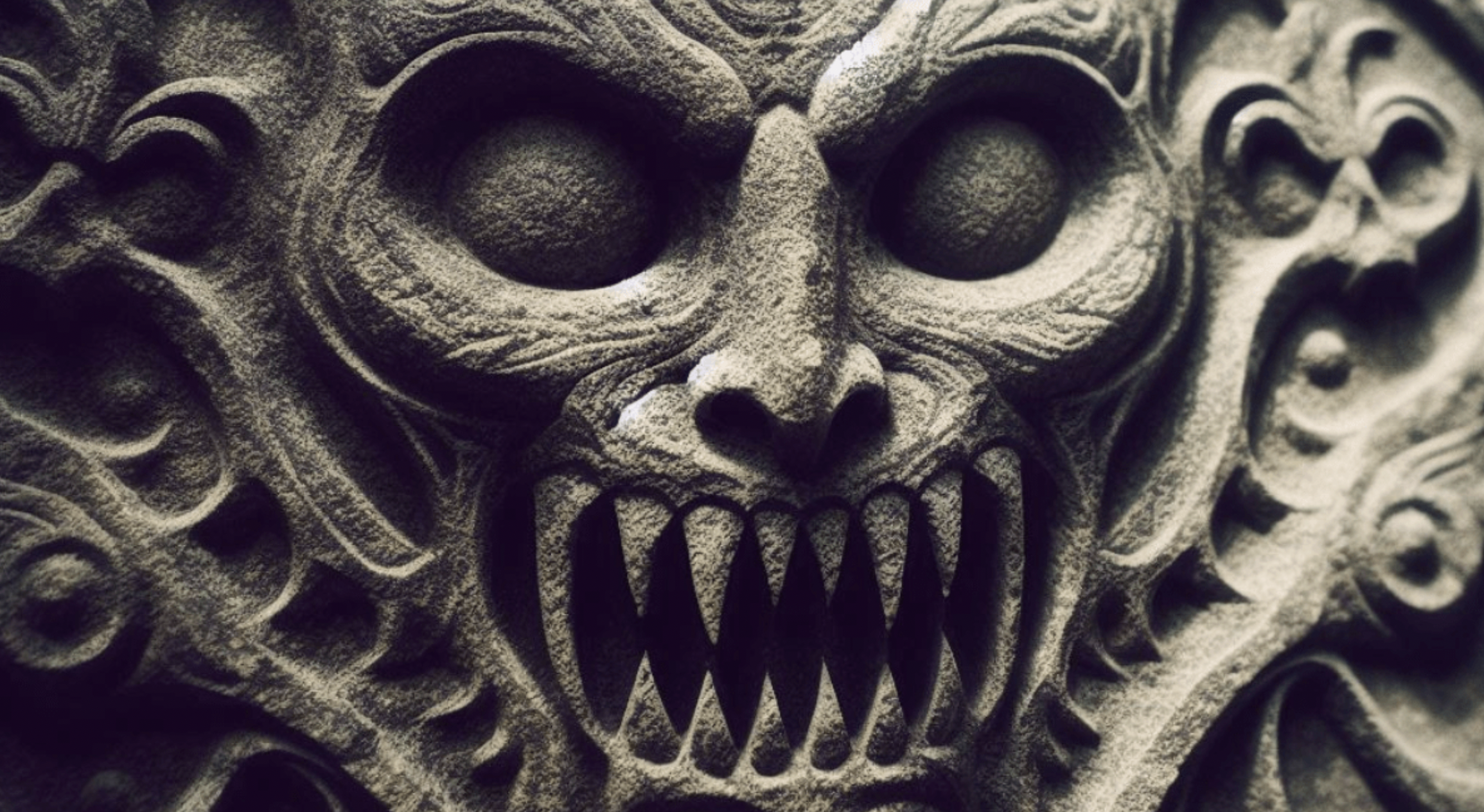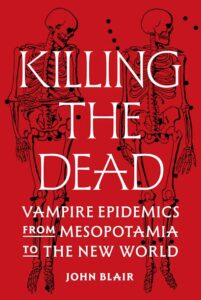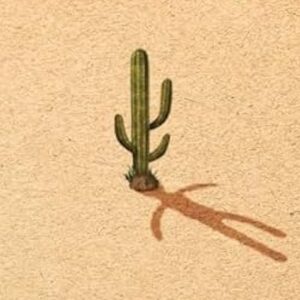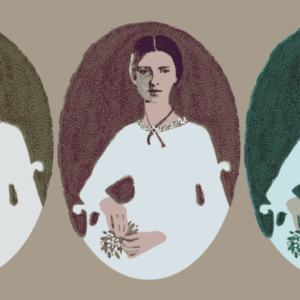
Why Do Countless Cultures Believe the Dead Walk Among Us?
John Blair on the Dangerous Dead in Society
How can whole societies come to believe that the dead walk among them? Understanding that requires moving beyond theoretical approaches and engaging with tangible human communities and their world-views. We will first visit two very different societies in which the veil between life and death has been thin. The dead have been close: sometimes to be revered, sometimes to be feared, but regularly to be interacted with, if not unambiguously in a bodily form. Both case-studies manifest an endemic layer of anxiety, capable of intensifying under stress into something more concentrated and physical.
The Sora of the Indian East Coast
The Sora are an indigenous, long-stable society. They are slash-and-burn farmers, with linguistic and cultural affinities looking outwards to South-East Asia. Their strong sense of sociability, mutual sharing, and interdependence crosses the life/death boundary. The engagement of the living with the dead is continuous and immensely complex, to the point of influencing large areas of social and ethical practice. Cremation happens swiftly, but is followed by extended negotiations to help the dead along the road from the short-term ‘Experience’ stage—when they may be resentful, conflicted, or dangerous—to the stable and serene ‘Ancestor’ stage.
That is hardest for those who have died badly: they can seek to pull the living after them, setting up chains of unquiet deaths. In such cases, ‘inquests’ are held: public meetings to settle differences across the divide, in which conversations with the angry dead—mediated by female shamans—can become very direct and informal. Here for instance are snatches from a dialogue between a little girl who had died recently and her aunt (representing the girl’s mother):
dead girl [arriving from the Underworld, faintly]: Mother, where are my nose-rings?
living aunt: They must have burned up in the pyre, darling, we looked but couldn’t find them . . .
dead girl [petulantly]: Why aren’t you showing me my nose-rings?
living aunt: They were so tiny. . . . Oh, my love, my darling, don’t cause your own illness in others. Can you say that your mother and father didn’t sacrifice for you? . . .
dead girl [addressing herself to her silent mother, and crying]: Mother, you were horrid to me, you scolded me, you called me Scar-Girl, you called me Leper-Girl, you said, ‘You’re a big girl now, why should I feed you when you sit around doing nothing?’
living aunt: So don’t you pass it [her illness] on, don’t you give it to your mother and little sisters!
dead girl: If I grab them, I grab them; if I touch them, I touch them; if I pass it on, I pass it on: that’s how it goes. . . .
In this culture of universal cremation, corpses cannot straightforwardly get up and walk. Even so, the deceased’s ‘ghost’ (kulman) is tangible enough to be coated with ash from the pyre, to have hair that the living can touch, to rummage around the kitchen looking for food, and to need restraining from returning home. In the following story (which reads rather like an origin-myth for the cremation rite), a dead woman who has not been cremated seems physical enough to her family:
A family lived in isolation in the jungle. One day the mother died and since he did not understand what death was, the father just abandoned her corpse. But every day when he left his children and went out to find food, her kulman returned and swept the house and cooked. . . . [The children told him, so he] stayed behind one day to see for himself. His wife did indeed come and start to work. He was overwhelmed with joy and rushed up to her and threw his arms around her. But as soon as he clasped her, she turned to ashes in his embrace. Only then did he understand that he had to cremate her and plant a stone for her.
As elsewhere, the ambiguity in such narratives may reflect ambiguity in perception: do the dead really walk? It may well be that the Sora, if pressed, would say that they do not do so in a literally corporeal sense. But if such a society were to suffer socio-cultural trauma and externally-driven religious change, leading for instance to the abandonment of cremation, might this aspect of their cognitive world assume a more lurid physicality?
Eastern Finland
Nilsiä, a small town in eastern Finland, belongs to a traditional society of mixed subsistence farming, little touched by modernity before the 1960s. In June 1998 a retired farming couple, Helmi and Uuno Heikkinen, were drinking coffee at home. A friend called Pikilän Helmi had dropped in, and was telling them about the death of her husband Jussi a couple of years earlier. While he was still unburied, Pikilän Helmi and her sister Elsa were preparing for the funeral. That night, Elsa slept beside her sister in what had been Jussi’s place. During the night, Jussi came with his walking-stick, shouted “Get out of my bed,” and drove Elsa away with blows on the leg. In the morning, her leg was red and swollen. Some time afterwards, Jussi visited his widow a second time. “Would you like to come with me?” he asked, in a friendly, enquiring fashion, adding, “but you still have some time left.” Later he came a third time, saying, “Now it’s time to go: you haven’t much time left.”
The meeting with the Heikkinens was soon after that. In fact, Pikilän Helmi had come because she thought it would be her last chance to meet them, and she did indeed die shortly afterwards. Also present on that occasion was Elvi Kuosmanen, who recalled Sanni Hyttinen, a former resident of the same building whose husband had died in the Winter War of 1939–40. Recently, when Sanni had just moved to an old people’s home, her husband had come and told her that it would soon be time for her to go: “It’s good that you now live in such nice quarters, but you won’t have much time to enjoy them.”
Helmi Heikkinen told this story to members of her family in July 2006, but her daughter-in-law and grandchildren agree that on previous occasions, they heard her narrate a simpler version: that Pikilän Helmi’s dead husband would regularly return to sleep with her, and that she essentially took that for granted. They suggest that Helmi Heikkinen unconsciously remolded the story in her mind into a more structured version (perhaps influenced by fairytales with the three-visit motif), and also filtered out the implied sexual aspect.
For us, this story has two lessons. One is about how oral transmission works: genuine memories are reported and handed down, but in the process they can be re-shaped into recognized narrative forms, with elements emphasized or suppressed to suit current sensibilities. The other—counter-intuitively for modern readers—is its normality. It just describes ordinary life, as perceived in pre-industrial societies across the globe through countless millennia: there is nothing sinister about Jussi’s return.
Going back another generation, we meet something darker and more eerie. Helmi’s mother-in-law, Anna Lovisa Heikkinen (1878–1961), was a hard woman in a tough environment. Her keen-sightedness seemed almost outside the human range, and her granddaughter remembers once seeing horns on her head. As she lay dying, she asked mysteriously to be buried with her hair. Soon after her funeral, footsteps were heard in the attic, where a search revealed a bag of hair and nail clippings. This was buried in a bog, and the footsteps ceased. Years later, her great-granddaughter saw her bible lying in a cupboard on the house porch and sensed that nobody liked to touch it.
These stories from a traditional Finnish family preserve traces of a perceptual world that once covered large areas of Europe. The boundary between the living and the dead is thin and permeable, and it becomes perilously frail when daunting individuals, having crossed it, show signs of coming back. Jussi and Anna Lovisa are not returning corpses, but they are physical enough to attack someone with a stick or tramp across a timber floor. Jussi’s story illustrates the particular dangers of the interval between death and burial. Anna Lovisa represents the strong, potentially dangerous matriarch whom we will meet later. But there is a distinct difference between these two dead people: one behaves in a normal, predictable fashion, whereas the other is sinister and provokes counter-measures. What would another stage along this spectrum look like?
Anthropological Perspectives
By now, we should have some grasp of the kinds of mindset that could—given the right stimuli—generate fears of the walking dead. What then were the stimuli? To pursue this further we need specific and close-grained analyses, but sadly those are few and far between. The heroic pioneers of anthropology, while intensely interested in comparative religious systems and concepts of the soul, gave little thought to the specific problem of corpses with an in-dwelling life. Sir James Frazer’s The Belief in Immortality and the Worship of the Dead and The Fear of the Dead in Primitive Religion make six volumes between them, in which beliefs across the globe are rehearsed in mind-numbing abundance. Even so, the dangerous physical dead barely feature there, outside a rather breathless catalogue of corpse-killing practices that is useful as a source for examples, but in no way analytical.
More recently, those anthropologists who have shown interest in the problem have tended to follow the universalizing lead of psychologists. There has been valuable work on the dangerous dead in animistic and multi-spirit cultures, notably Katherine Swancutt’s fine-grained analysis of ‘vampiric imps’ in the complex family structures of Buryat Mongols. By comparison, the few surviving pockets of European corpse-killing have (sadly and surprisingly) seen little attention. A few case studies do nonetheless exist, and two especially deserve our attention here.
Carl-Ulrik Schierup is a sociologist interested in ethnicity, migration, and multiculturalism: his study of vampire beliefs among Wallachians in Denmark and Sweden starts from research on those expatriate communities. Back home, in north-eastern Serbia, the beliefs are endemic, but why do they “not only survive, but are even invoked more often in immigrant communities, than in the pre-migratory rural situation?” Schierup’s answer lies in heightened tensions between expatriates and their home families, whose distinctive structure, dominated by the elderly, continues to exert a hold on them. He begins with one Milorad, who is working late in his suburban Danish house in 1983. He hears a knock, and lifts his tired eyes: “His deceased mother is hovering outside the window in her white burial attire, muttering in a distant voice: ‘Why have you left me . . . ?’” To his friends, it is only too predictable: “They knew before I did that she might come. . . . I had gone against my mother, and married Zlatka, who was a simple girl and not good enough for me according to Mamma. Then later, when I moved from my mother’s house to bring peace to the family, my mother condemned me. . . . People knew that my mother was strong and that her judgement was a hard burden to bear. They knew that she might return.”
Schierup locates such anxieties in the ‘Timok family type,’ which comprises up to five generations in the same household (now often alternate, as couples temporarily migrate, leaving children with grandparents). It is made practicable by an early age of marriage and a low birthrate. The senior generation, which dominates property-rights and household decision-making, seeks to maintain control by arranging marriages—often doomed ones—for malleable teenagers. Predictably, many young couples defy the system and make their own choices. Such marriages tend to be more successful, but they can cause bitter and long-lasting conflict between the generations. “Thus the ultimate moral sanction of the older generation, lies in the fact that they might reappear [after death] and revenge themselves.” After about 1970, a new factor was temporary migration to Scandinavia. Migrants regularly returned to their home villages and families, with which they still identified and where life-cycle events happened, but the potential for conflict grew as younger generations became more educated and cosmopolitan. The elders responded by falling back on traditional ideology and magical sanctions: “Thus, the strategic importance of ‘vampires’ tends to increase as integration in Scandinavian society grows.”
There are anthropological insights of a different but complementary kind in Juliet du Boulay’s unique and brilliant paper ‘The Greek Vampire,’ based on her fieldwork in the village of Ambéli (in Euboea on the Aegean coast of Greece) in 1971–3. In contrast to Schierup’s sociological and functional approach, du Boulay explores symbolic meaning. Sadly, her work stands so completely on its own that generalization from it is risky, but it adds such richness in context and significance that it needs close attention here.
The ritual life of Ambéli was dominated by a pervasive cyclic symbolism, represented by the traditional ring-dance, in which all movement was in a spiraling anti-clockwise (‘auspicious’ or ‘right-handed’) direction. In rituals of both marriage and death, blood is a central motif, and that blood must circulate auspiciously, out of the kindred rather than turning back upon it. In the case of marriage, men stay in their own kindreds whereas women move outside them: “The movement of women between the kindreds is equated with the movement of blood and expresses the principle that this movement should be unidirectional and should not be reversed.”
When death comes, the Angel of Judgement “with his drawn sword cuts the victim’s throat, and drenches with blood not only the dead person but also the house and everyone in it”: thus, the individual is transformed from a this-world being of flesh and blood to an insubstantial soul. But that process can go horribly wrong if a procedural accident—usually a cat or some other creature or object passing across the corpse—occurs between death and burial. This breaks the outwards-flowing spiral movement of the blood, turning it back on itself, and may also block a vertical axis passing through the corpse between the upper and nether worlds. The corpse is then reanimated as a predatory and lethal vampire.
There is thus a parallelism—though not a direct causal link—between the good and bad directions of blood circulation in marriage and in death:
Blood going to ‘strange’ blood [by marriage well outside the kindred] pours in a life-giving spiral through the community; while blood going to blood that ‘resembles itself’—that is to say, stays where it is—halts and doubles back. Similarly, the life in which the outpouring of the blood in death has not been frustrated moves on without check into the new and auspicious categories of the other world; while a life by which this outpouring is, by some inauspicious action, checked and turned back on itself, returns to devour the succeeding generations, and imperils the destiny of its own soul.
The parallel elucidates a dramatic moment in du Boulay’s research when she overheard two women deploring a marriage between second cousins: ‘In this context the comment then uttered takes on a startling significance, for, said as an aside and half under the breath, it took the form of a well-known proverb: “The vampire hunts its own kindred” (vrykólakas tó sói kynigáei). The image of the vampire returning from the grave to hunt its own kin sprang intuitively to mind in the context of the blood which in second cousin marriage returns to destroy its originators’.
Du Boulay’s work gives rich texture and meaning to motifs found in many (but not all) dead-killing cultures. One of those, of course, is blood: vampires are rarely caught sucking it, but they sometimes accumulate it in their bodies and graves. Another is social ritual, shockingly transgressed if the dead cannot die. A third is the motif-complex of blocking, frustration, and diversion onto the wrong path, many versions of which appear in this book. Whenever we meet these, we should remember her insights.
Whether she explains why the people of Ambéli came to believe in vampires in the first place is perhaps not so clear. Other Greek regions may be different (as she fully acknowledges), and places further afield may be different again. We will see that beliefs in dangerous corpses were deep-rooted in the Balkans, but may only have developed in Greece during the later Middle Ages. Rather than the Greek vampire being created as a sinister counterpoint to the auspicious spiral, it seems more likely to have been assimilated into that symbolic system from a different source.
What sustained it? The Schierup and du Boulay models have one social institution in common: rigid and heavily-determined marriage patterns based on extended kindreds. But whereas du Boulay dissects attitudes at a moment in time, Schierup emphasizes stresses building up because of social change, migration, and inter-generational strife. Conflicts between norms imposed by family elders and the inclinations of young couples must have occurred in Ambéli, too, where mothers-in-law were proverbially cross-grained and old women could mutter under their breaths about vampires. In the expatriate Wallachian communities, the vampires were the grandmothers themselves.
If this recalls the Freudian idea of ‘relative-as-demon’, it must be stressed that it is just one scenario among several. It introduces some important themes that we will meet again: distinctive kinship structures; dominant and sinister matriarchs (Figure 5); disempowered but rebellious teenagers; heightened stresses within migrant communities. But there will be other cases where few or none of these factors apply.
There is a distinction between societies like those explored in these two studies, where ‘the vampire hunts its own kindred,’ and the many others where it attacks neighbors rather than family and is a general public nuisance. Intra-family tension is one layer, but socio-economic change, trauma, and disease have added others. In a global context, the Ambéli cameo is one point on a fluctuating trajectory.
Epidemics?
Even if fear of the dangerous dead is a human propensity, the cultural factors activating its more intense forms have been absent from large regions of the world. In other regions, the fear has existed at a mild level through long timespans; in others again, it has risen to intense levels during short or occasionally lengthy phases. It seems appropriate to adopt clinical terminology: chronic versus acute, endemic versus epidemic.
Some well-documented outbreaks of vampire-killing erupted quite suddenly: in Saxony and then Silesia from the 1540s, in Moravia from around 1650, and in New England from the 1780s. They then ran for up to a century, with gradually diminishing intensity. That helps to make sense of an older case: eleventh- to twelfth-century England, where the start of the outbreak remains hazy, but its geographical retreat and then near-disappearance after 1200 was quick and obvious.
Elsewhere, and further back in time, the evidence is rarely adequate to calibrate the rise and fall of epidemics: we tend to find specific clutches of stories, or of excavated burials, that suggest intense phases of corpse-killing without giving much idea of their length. With at least some of these, their very isolation might suggest short, acute episodes. On the other hand, there are large areas—northern Europe through the first millennium AD, for instance—where sporadic episodes are most convincingly ascribed to low-level but long-lasting fears, perhaps punctuated by brief local peaks.
The clear epidemic cases arose against backgrounds of acute trauma: foreign invasion combined with socio-economic and religious change in medieval England; bubonic plague, the Reformation and re-Catholicization in central Europe; violence and disease at the interface of Turkish and Habsburg imperial domination in Serbia; and the devastating scourge of tuberculosis in New England. Epidemic disease may be the most powerful driver, but any grossly disorientating and destabilizing change could potentially arouse concerted attacks on the dead—so long as a basic cultural propensity was already there in the background. In other cases we will need to explore different factors, such as the anthropologists’ models of family structure, and religious tensions between Catholic, Orthodox, and Muslim traditions.
*
In the end, the dead are most likely to be blamed when external forces bring grievous burdens of sorrow and fear. These can be social, cultural, and religious changes, up-ending the customs and belief-systems that underpin stable life. They can be the grief and outrage of the colonized or the insecurities of colonizers. They can be destructive wars. They can be religious transformations. Above all, they can be epidemic diseases.
Faced with such catastrophes, inaction is intolerable: one must do something. Tragically, vengeful hatred has often been directed irrationally against neighbors, for instance those identified as ethnic, religious, or sexual deviants. But suppose the culprits are recognised among the dead? That may be irrational too, but it will spare the living.
Few reflective comments have come through to us from societies that actually practiced killing the dead. But we can listen to a relative of the last New England ‘vampire’ (exhumed in 1892), recalling the tuberculosis that devastated his family and neighbors, and their way of coping with it: “Do I believe in vampire? No. No, I don’t believe in that. I’m not sure they did, but they had to come for an answer. And it turned out that maybe that was the answer. And some of them old people probably died with that in their mind, that they did the right thing.”
________________________

From Killing the Dead: Vampire Epidemics from Ancient Mesopotamia to the New World by John Blair. Used with permission of Princeton University Press. Copyright © 2025 by John Blair.
John Blair
John Blair is an Emeritus Fellow of The Queen’s College, Oxford, and Emeritus Professor of Medieval History and Archaeology at the University of Oxford. His many books include Building Anglo-Saxon England (Princeton), The Church in Anglo-Saxon Society, and The Anglo-Saxon Age: A Very Short Introduction.












